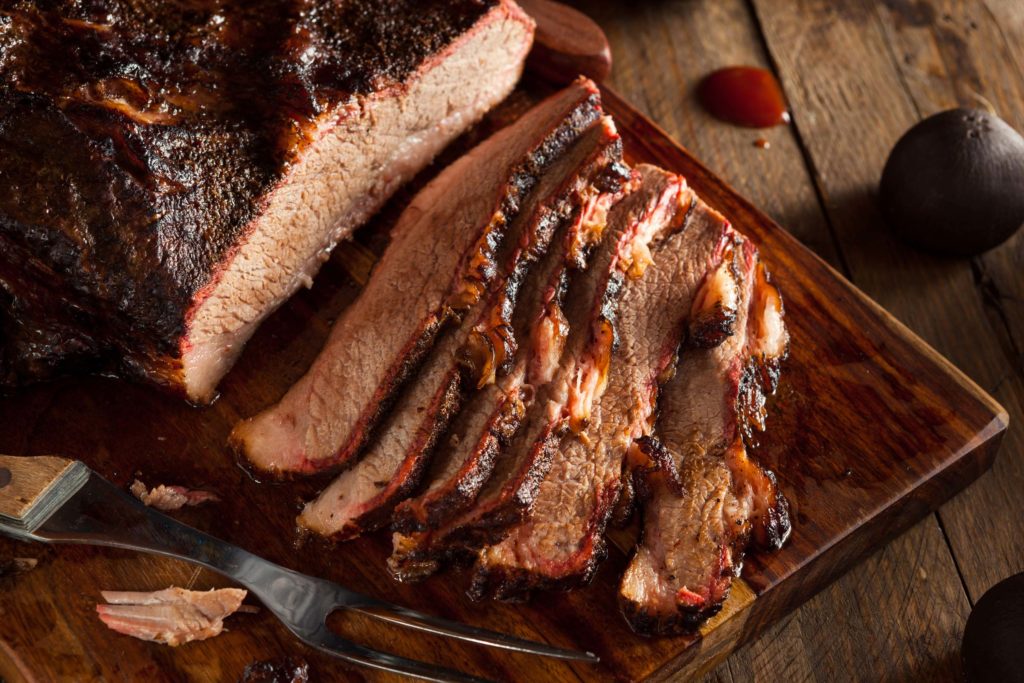Regional Barbecue Styles & Ridge Zinfandel Pairings
Blog Post
Dust off those grilling utensils and join us for an exploration of regional barbecue styles and how to pair them with our different zinfandels. Kansas City, North Carolina, Texas, and Northern California; each has its own unique interpretation of barbecue flavors, and we’re here to help guide you through the tasty variations.
How to Pair Wine and Barbecue
The first step in pairing wine and barbecue is to identify the dominant element in the dish and then look for a complementary element in the wine. The dominant element in a particular dish typically falls into one of three categories:
- The primary ingredient
- The cooking method
- The sauce or side
When you’ve determined the key element of the dish, look for complimentary flavors in the wine. Below are several examples. Try these recipes or experiment with the suggested pairings.
1. Kansas City: BBQ Baby Back Ribs & Boatman Zinfandel

The dominant part of this dish is the barbecue sauce. Kansas City style sauce is what many associate with a “traditional” barbecue sauce. This not only brings richness to the ribs, but a diverse array of spice. Since this dish calls for a wine of equal intensity, we’ve paired it with our Rockpile Zinfandel. This wine is a blend of zinfandel and petite sirah from mountainous plantings in the Rockpile AVA of Sonoma County. This rich, full-bodied wine with notes of blueberry and spice pairs beautifully with this dish.
2. North Carolina: BBQ Pulled Pork & Geyserville

There are two focus ingredients in this dish: the relatively mild pork and the taste of vinegar in the sauce. This combination calls for a complex wine with good acidity to balance the use of vinegar. Our match for the Pulled Pork is our Geyserville vintage. The age of the vines at Geyserville contribute amazing complexity to this wine. Additionally, the significant amount of Carignane, which gives the wine great acidity, makes this a wonderful pairing.
Texas: Beef Brisket & San Lorenzo

Dominant elements of this dish include the beef and the high impact cooking method of mesquite grilling. This dish calls for intensity and structure. Our choice pairing is the 2020 San Lorenzo. This wine’s full body and rich, dark fruit complements the grilled brisket perfectly. The complexity of the old-vine zinfandel shines in the San Lorenzo, along with petite sirah and alicante bouschet, which add structure and tannin, helping create a fantastic pairing for this bold dish.
California: Zin-Soaked Tri-Tip & East Bench Zinfandel

California’s signature varietal became the core of the marinade for this Tri-Tip. The California Tri-Tip cut was popularized in the 1950’s in Santa Maria, California, where locals rubbed it with a variety of seasonings and roasted it whole over red oak. Locals favored Tri-Tip for its full flavor and lower fat content. The cut is still often labeled the “Santa Maria steak.” We chose a quintessential Dry Creek Valley Zinfandel, the East Bench, as its pairing partner for this preparation.

The Zinfandel Grill Pack
Get three of our favorite Zinfandels for pairing with summer BBQ. Shop our Zinfandel Grill Pack.
Hungry for more grilling recipes? Explore our Food Pairing Library for more summer grilling inspiration.
Wait!
In order to qualify for user related discounts, you must log in before proceeding with checkout. Click the button below to log in and receive these benefits, or close the window to continue.
Log In